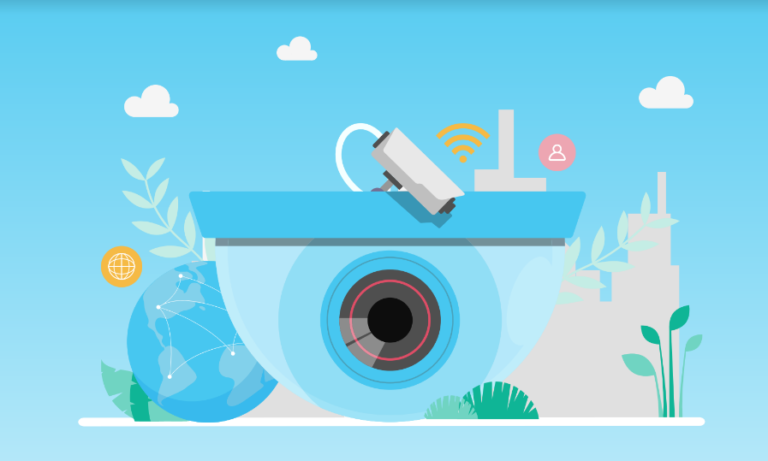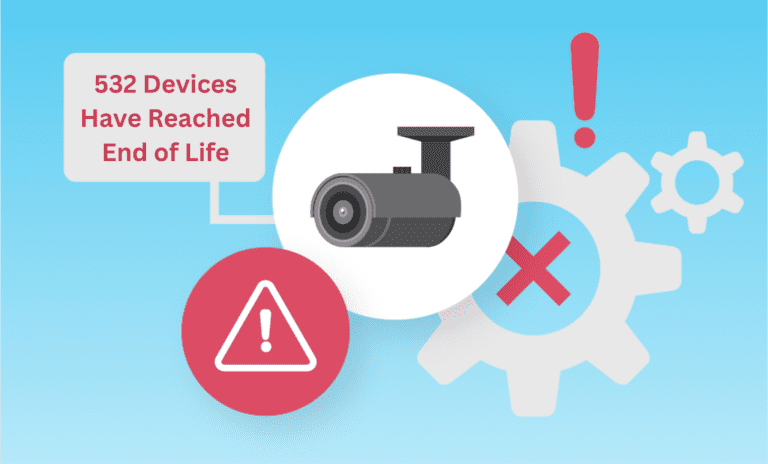As organizations increasingly understand how important it is to manage their physical security devices effectively, they’re seeing that managing those devices properly requires organizational collaboration beyond their physical security teams.
Given the important role played by other stakeholders, such as IT departments and external parties like systems integrators, it’s crucial for physical security teams to collaborate and share information with them in order to work together to manage their physical security devices reliably and efficiently. In addition, sharing valuable information with other departments can help physical security teams get a “seat at the table” within their organizations.
But many organizations still suffer from a lack of efficient, real-time communication and collaboration surrounding the management of their physical security devices, preventing them from reaching a state of enterprise-ready physical security.

Why is it so important to ensure that your physical security team shares information and collaborates efficiently with your IT department and other stakeholders? When this collaboration is done right, it offers you four essential benefits – helping you to improve your overall security posture and maximize the value you get out of your physical security devices.
Specifically, here are the four most important advantages to effectively sharing information surrounding the management of your physical security devices:
Benefit #1: Improving device availability
It’s not hard to see why device downtime is such a problem in the world of physical security. Simply put, when your devices aren’t working properly, you can’t count on them. And downtime can occur for a variety of reasons – not only because of problems with your physical security devices, but also as a result of issues elsewhere in their ecosystems, such as in a network switch, a video management system (VMS), or a power supply.
One key to minimizing downtime is detecting it rapidly. When your team is notified of downtime, it’s also helpful to receive important details that can shed light on the cause of the downtime. Given the variety of factors that can cause downtime, sometimes the problem might be solvable without involving other departments or external teams – for example, with a simple device restart or an update to the device firmware. But other times a device issue can be a problem best solved by your IT department, an external systems integrator, or an outside technician.
By sharing information effectively with the relevant stakeholders, you can help ensure that they know when they need to resolve an issue causing downtime, and that they have the details they need to do their jobs quickly. This way, you can maximize both the uptime of your physical security devices and the security value that they offer you.
Benefit #2: Bolstering cyber protection
The risk of cybercriminals hacking into physical security devices is a serious one. It’s also an expensive one, with the average data breach in the U.S. now costing $9.48 million, according to IBM’s Cost of a Data Breach Report 2023.
Although organizations can take steps to mitigate this risk – such as rotating passwords, upgrading firmware, and replacing outdated devices as needed – it’s also important to monitor devices to ensure that they haven’t been compromised by hackers.
Since IT departments are commonly tasked with protecting physical security devices (as well as other kinds of assets) from cyber threats, it’s critical to make sure that they have real-time insight into any anomalies in device performance that can indicate that they’ve been hacked or could be vulnerable to cybercriminals. By sharing this kind of information with the relevant members of your IT team, you can empower them to offer you robust protection from cyber threats.
Benefit #3: Ensuring compliance
As organizations rely heavily on connected devices to keep them safe, they increasingly face stringent regulations – especially in light of growing cybersecurity and national security concerns. In addition to these legal requirements, organizations should have their own IT policies and standards relating to physical security devices, which are designed to protect them against physical, cyber, and other risks.
When organizations fail to comply with legal or organizational requirements, they can face a wide range of dangers – including fines, reputational damage, and more.
Steering clear of those risks often requires work from IT departments and other stakeholders. To make sure all relevant stakeholders have the necessary insight into the compliance status of your physical security devices, it’s important to make sure they have comprehensive visibility into those devices. And that visibility should extend beyond the manufacturer or model of device: for example, when assessing NDAA compliance you’ll need visibility into your devices’ inner components, such as microchips. By sharing this information with those stakeholders, your physical security team can help you avoid violating either relevant laws or your own IT policies and standards.
Benefit #4: Cutting costs and budgeting proactively
When it comes to physical security device management, sharing information efficiently involves avoiding the risks of both undersharing and oversharing. When relevant employees don’t get alerted promptly to significant device issues requiring their attention, those issues can leave an organization at significant risk. On the other extreme, if team members are bombarded with too many notifications (many of them likely irrelevant and redundant), they could suffer from alert fatigue, wasting their time and hurting their ability to handle their primary responsibilities.
By setting alerts to be sent in real time to only the most relevant team members, you can help those team members to do their jobs well, without distracting or overwhelming them with excessive notifications. This way, you can increase the efficiency of your employees, as well as external systems integrators and technicians – helping you make the most of your physical security budget.
In addition, budgeting effectively for physical security devices involves planning ahead for device end of life, so that you can have new devices ready to replace your old ones in a timely way. Given the importance of promptly replacing outdated devices that could be vulnerable to hackers, it’s critical to plan ahead and budget proactively for device replacements. By ensuring that the relevant departments (such as your finance team) are alerted well before your physical security devices reach their end of life, you can ensure that you can replace those devices right on schedule.
Sharing information through the SecuriThings Reports Manager
Understanding the importance of delivering crucial information to relevant stakeholders, we at SecuriThings make it easy and convenient to create, manage, and share a rich variety of reports through our Reports Manager. Complementing our Smart Alerts that are automatically sent when device issues are detected, these customizable reports offer you valuable insights and streamline the process of sharing them with other stakeholders – even if those stakeholders don’t themselves have access to the SecuriThings platform.
To meet your various information needs, the Reports Center allows you to generate reports offering you a real-time bird’s-eye view all of your physical security devices, including essential details such as their availability, cyber hardening and compliance status. It also offers reports providing a deeper dive into various types of issues relating to device recording, cybersecurity, compliance, and more. And you can always decide whether to generate a given report on a one-time basis or on a recurring schedule, as well as determining who will automatically receive it.
One key to making the most of all these reports is setting them up to reach the right individuals, and only the right individuals. By providing all of the key stakeholders with the information they need in real time, you can help them to maximize your device uptime, defend against cyber threats, and ensure compliance with both relevant laws and your own IT requirements. By planning ahead for device end of life, you can ensure that you’re prepared to replace outdated devices promptly, helping you bolster your overall security posture. And by preventing excessive alerts from being sent, you can optimize your efficiency and avoid the risk of alert fatigue.
This way, you can use the SecuriThings Reports Manager to enjoy all four of the key benefits of efficient communication and collaboration between physical security teams and other stakeholders.




